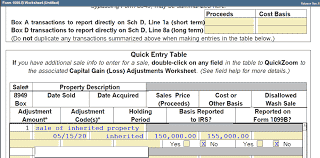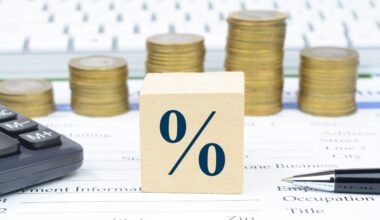Running a business presents a distinct set of challenges and is incredibly liberating. Whether you work alone or as part of a large team, you’ll undoubtedly need to decide where to put your time, effort, and money. Managing your cash flow effectively is one of your most important decisions. For many business owners, cash flow is a source of stress and one of the most critical factors in any company’s success. You can overcome this obstacle and many others as your company expands with long-term business loans. Read on to learn how long-term business loans work with the best options in 2023.
What are Long-Term Business Loans?
Long-term loans for small businesses are those with terms of three to ten years. Long-term business loans are a typical way to support that progress when a company is prepared to invest in potential future growth. Term loans enable businesses to finance significant expenditures by making regular payments over time. This can involve upgrading facilities or buying new manufacturing equipment. Many firms would not be able to make the crucial transition from fiscally concentrating on short-term survival to planning for long-term growth without a term loan.
What are the Benefits of Long-Term Loans for Small Businesses?
Long-term business loans are typically used to buy a specific item to help the business expand and generate more revenue. You could use your loan to buy equipment, vehicles, commercial real estate, or to hire new employees, for example. The general guideline is that the loan period should be equal to or less than the investment’s usable life; for instance, you wouldn’t want to acquire a new work van before the loan for the current one has been repaid.
A company loan from an internet lender or a U.S. bank typically ranges from $5,000 to close to $600,000, though loans can be for higher or lower amounts. Following approval, businesses get a lump sum of the complete loan amount. They must make regular payments of the loan’s principal and interest throughout the loan.
The current collateral of your organization frequently supports long-term business loans. The lender can reclaim some of the cost if your company defaults on loan payments by selling off corporate assets like inventory, real estate, or automobiles. Getting a long-term loan without collateral, a strong business history, and a high credit score can be challenging.
Long-Term Business Loans for Bad Credit
You can still get approved for a small business loan with poor credit. This is because the overall financial stability of your company is more important than your credit score. Lenders usually want you to have a credit score of at least 500, have been in business for at least six months, and make more than $30,000 a year. The best lenders for business loans with bad credit are listed below.
#1. Credibly
- Best for businesses with high revenue
- Available in three to fifteen months
- Amount maximum: $400,000
#2. Factor Rate Estimate
- Factors beginning at 1.15
- 300 minimum credit score
- A minimum of six months in business
- Same-day financing time
Pros
- Quick funding
- the low credit score threshold
Cons
- The minimum monthly income requirement is $15,000 to be eligible.
- Need payments on a daily or monthly basis
Credibly’s working capital loan may be an option if you have a high monthly income and poor credit. To meet various business needs, it provides loans up to $400,000. Additionally, Credibly provides merchant cash advances and a business line of credit.
How to Obtain Long-Term Business Loans Despite Having Poor Credit
Even with poor credit, you can still get the funding you need to launch and expand a profitable business. Securing a small business loan with bad credit only requires three simple steps:
#1. Understand Your Credit Rating
Lenders use personal and business credit scores to assess the risk of a loan. Knowing your credit score and raising it before applying for a loan can help you choose the best financing options to investigate. These scores can affect your ability to obtain funding for your business.
#2. Examine Your Alternatives Depending on the Criteria for Eligibility
There are particular criteria you must meet for each type of financing to be approved. The following criteria are frequently used to determine traditional business loans:
#3. Personal credit rating; • Number of years in operation; • Annual revenue
To determine which bad credit small business financing is best for you, research the requirements for each type of financing available. Your chances of being approved are highest for small business loans. Consult a National Funding Funding Specialist for individualized guidance on your financing options.
#4. Select the Best Course of Action for Your Company
There are numerous financing alternatives besides conventional loans for business owners with poor credit. Consider the lender’s reputation in addition to the eligibility requirements and repayment terms when looking into alternative financing options. Consult borrower testimonials and service representatives. Make sure your lender has a track record of happy clients and is dedicated to helping you on your path to greater success.
Read Also: Best Urgent Loans For Bad Credit In 2023
Types of Long-Term Business Loans
When searching for long-term small business loans financing, keep these five loan kinds in mind:
#1. Loans from the Small Business Association (SBA)
For small firms wishing to invest in new machinery, buy real estate, or renovate a building, the long-term SBA loan 7(a) and the CDC/504 loans are ideal. Depending on the amount borrowed, the payback conditions for this kind of long-term SBA loan can run up to 25 years. With interest rates typically ranging from 5.25% to 7.75%, the SBA offers long-term loans with amounts ranging from $100,000 to $5 million.
You need to fulfill the following criteria in order to be eligible for an SBA long-term loan:
- Must have been in operation for at least two to three years;
- Good credit history
- No history of default payments on government-backed loans;
- Must demonstrate that all funding options have been exhausted;
#2. Line of Credit for Business
Lenders provide a credit limit on a business line of credit, allowing you to take money whenever you need to. You are required to pay back the amount you withdrew plus interest. Depending on the terms you and the lender have agreed upon, you may pay weekly or monthly. Your credit limit will be reinstated to its initial level once you have repaid your long-term loans. When another loan is required, you can take another withdrawal from your line of credit.
Loan limits for a business line of credit range from $10,000 to $5 million, and interest rates typically range from 5.25% to 29.99%. New firms frequently use this sort of loan because it is simple to qualify for. They have the option of choosing to secure the loan or not.
#3. Financing for Equipment
Lenders will give you the funds you need for equipment financing so you can purchase or upgrade your equipment. Usually, repayment terms are completed in convenient regular installments. You won’t have to pay for the equipment out of pocket.
The benefit of equipment financing is that the loan can be secured without collateral. The guarantee will be provided by the equipment you purchase with the loan. This implies that the bank or lender can take the equipment to cover the loan if you fall behind on payments.
The loan interest rates range from 5.25% to 24.99%, ranging from $25,000 to $5 million.
#4. A Long-Term Loan
A multi-year term loan has a two to the five-year repayment period. A multi-year long-term small business loan comes with modest monthly payments. It covers business expansion costs while giving you enough cash flow for regular business operations.
With interest rates ranging from 5.99% to 18.99%, loans between $25,000 and $5 million are available.
#5. Loan Based on Assets
As the name suggests, an asset-based loan is a type of financing where assets are utilized to guarantee the loan. Most lenders consider suitable assets that can secure this form of loan to include inventory, real estate, equipment, accounts receivable, marketable securities, and intellectual property (with accounts receivable and inventory being the most significant).
Best Long-Term Business Loans
When it comes to business financing, there are many possibilities. The one that is best for you will depend on your credit rating, length of operation, and the amount you need to borrow. The conditions and funding speed differ from one product to the next. Here is a look at the small business funding options you have in light of that.
#1. SMBA Loans
Lenders and banks process loans provided by the U.S. Small Business Administration. They are low-interest loans used to expand a business, purchase property or equipment, or get back on their feet following a natural disaster. An SBA loan may only be used to borrow a total of $5 million.
There are four distinct SBA loan categories:
- •SBA 7(a) loans are a good choice for purchasing a company, obtaining working capital, or investing in business equipment. The maximum loan amount is $5 million. The interest rate on SBA 7(a) loans is variable and based on the prime rate. There must be collateral.
- •The maximum amount of a 504 loan is $5 million. Business owners frequently use a 504 loan to buy equipment or real estate. Working capital or inventory cannot be utilized as collateral for SBA 504 loans. Normally, interest rates are fixed and based on the yields on five- and ten-year US Treasury bonds. No security is needed.
- SBA microloans can be used for working capital and to buy supplies, machinery, or furnishings. Rates range between 8% and 13%. You can borrow a maximum of $50,000 from community-based groups that offer loans.
- Borrowers may be eligible for up to $2 million in SBA catastrophe loans. They are created especially for proprietors of small businesses impacted by natural disasters or major world crises. The SBA claims interest rates are set and decided by legally prescribed formulas. (Normal rates range from 3% to 7%.)
#2. Loan Terms
With a term loan, you receive a lump sum of money and are obligated to repay. They are made to help small business owners who have been hurt by natural disasters or major world crises. s need.
- Loans with a long term: These loans have at least a six-year term. They are often employed for large purchases, like a business vehicles or real estate.
- Medium-term loans: These loans typically have periods of two to five years and are used to finance business expansion or the purchase of equipment.
Loans with periods under two years are referred to as short-term loans. They are often used to buy big things, like a business car or a piece of property, or capital, or take care of other urgent cash requirements.
#3. Credit Lines
LOCs, often known as lines of credit, give business owners instant access to funds. You pay interest on the money you withdraw, and there are no restrictions on what you can do with the funds. The lender chooses the loan amount and interest rate. Many LOC loans have eligibility conditions, including minimum credit scores of 500 or higher, minimum yearly income, and the time your firm has been in operation.
#4. Advances to Merchants
In exchange for future credit card transactions, the lender provides They are often used to buy big things, like a business car or a piece of property. They allow daily using a portion of your credit card sales in exchange for instant access to cash.
Conclusion
When it comes to business financing, there are many possibilities. The one that is best for you will depend on your credit rating, length of operation, and the amount you need to borrow. The conditions and funding speed differ from one product to the next.
Related Articles
- BUSINESS LOANS BAD CREDIT: Definition and How to Get It
- SMALL BUSINESS LOAN: How to Get a Small Business Loan
- LONG TERM BUSINESS LOAN: How To Get One
- HOW TO GET SBA LOAN APPROVED: Best Easy Guide (+ Free Tips)
- SBA LOAN PROCESS: What It Is and How It Works






